 So that you can touch the tip of the iceberg in one click, here is Google's serving of black holes in relation to resources which illustrates use of the term across a wide socio-economic spectrum. Most of the entries you'll find there are relatively recent, since the phrase has only become popular in fiscal cultures over the last couple of years. Is it a coincidence that a furore over potential creation of black holes in the laboratory arose among the populace at around the same time? Last night at a friend's house over a bottle of wine, the Black Hole analogy for fiscal frittery was explored. By 'explored', I mean a suggestion was made that there is more to the black hole than meets the eye - surely in certain circumstances a positive connotation could be drawn from the negative inference? My friend was not convinced, and the subject submerged, so the conversation could hardly be described as having trawled the depth of implications surrounding this mysterious event horizon. 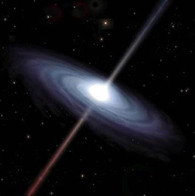 Black holes have certain characteristics which set them apart from everything else in Nature. The most profound of these is the fate of the material a black hole swallows. Physics can account for some of the processing which goes on in the vortex of doom, but our understanding of science doesn't allow for any glimpses beyond the singularity - the heart of a black hole where gravity condenses matter to unimaginable pressures and the laws of physics we know about break down. From there, the tale wags nonchalantly until such time as evidence surfaces for the rest of the story to be told. My money is on some incarnation of a 'white fountain', the outpouring of energy in another dimension or region of spacetime to which the singularity has forged a 'wormhole'. Perhaps this is due in part to a love of Stargate SG1, but in truth I had suspicions about the case in point long before I knew about the long-running series. Brought into a social context, it's apparent that black holes have followed hot on the heels of blue-sky thinking, a pre-loved Mecca of intellect which the corporate world was once sure would save it from fiscal doom. Spiralling the current circuitry of language logistics fly words like Uncertainty and Infinity and Quantum, describing trends and products ranging from futures markets to feminine hygiene disposables. 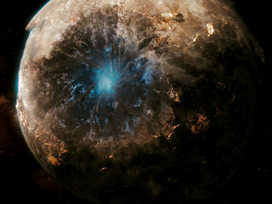 The outlook is not all as black as it may appear. In the context of my friend's example, her invaluable work in hospital fundraising found itself branded with Black Hole terminology when in fact her efforts had secured visible successes of unequalled proportions, including revolutionary ward refurbishments and new equipment which would otherwise have remained out-takes of boardroom ideology. Her anger at such injustice could not be quelled by my assertion that the invisible part of the singularity spectrum was vast, so vast it could not be fathomed, and that the general consensus of social opinion - that every effort to focus productive expenditure was a waste of time - was merely the fear-fuelled overspill of a modern malady, a depth of despair at the greed and corruption which threatens to overtake common sense and the common capacity for considered change. The fact is, while the planet continues its journey through the galactic medium, we live on a Monopoly board of illusionary catastrophe. Money is a manufactured resource, not a real one. While we cocoon ourselves with an idea of safety in monetary numbers, we are constantly striving to secure more of it. Nowhere is this truer than in the highest branches of the corporate canopy, where the mega-rich fall over themselves and each other in attempting to snatch a greater share of whatever there is, concurrently shoring up overflowing vats of what, in reality, there really isn't.
In living life to the full, we have only our own personal worlds to play with. How we treat our personal spacetime is a matter of value, and we know that moral value has far more substance in real terms than the play-doh of profiteering. Happiness comes from the fulfilment of dreams, and those dreams are deeply set in loves and freedoms which have nothing to do with what's in the bank. When we can reach agreement to improve our personal environments, at home and in the workplace, by using the power of our minds and intuitively shared values, we have a chance to make changes worth having. While we continue to gripe about grievances and energise pointless cycles of blame and guilt, we stay trapped in the vortex of crumbling capitalism where the harmonics of higher purpose are shunned, and dreams of riches are hollow horses washed up on distant shores of a future waiting to be created.
0 Comments
 On Tuesday 19th November I arrived in Swindon, to take my mother to a meeting in the evening, before which I had a few hours booked in advance to spend in Wroughton, just a couple of miles down the road. There on a disused airfield, the Science Museum protects its cache of artefacts, most of which we probably know nothing about, including Tresor des Tresors by Nicolas Flamel. Since for me the journey is around 80 miles, by good fortune my Mum's home meant I could nip off round the corner to study some ancient alchemical history in close-up. What I'd failed to glean from the photocopied page in London's exhibition is that Nicolas Flamel writes in French, probably because I didn't have my glasses with me at the time, smitten instead by the image of juxtaposed phoenixes and hints all around me from exhibits pointing to very interesting correlations between the alchemy of then and the new physics of now. So when I sat down on a wooden chair in the sombre, unassuming reading room of the most important library in the land, the only cushions being those on the table in front of me to support the fragile book, carefully parting pages of circa-1700 Dark Age musings written in the hand of perhaps the greatest alchemist of all time, I was disappointed to find I couldn't read a word of it. "Never mind," I thought. "Something else will have to kill my time for the next three hours." I wasn't about to leave the den of Horus in a hurry. I didn't have an appointment to come back. So I asked the nice librarian if I could source the library files somehow and find something else while I left Nicolas's book in the capable hands of the scannerman (I'd have most of the pages in e-format later, to decipher at leisure). He showed me how to work the library computer, but the computer was most insistent. There was only one book it would let me have access to at that time, in that room. I failed to find any other book located in the Wroughton museum using the search term ‘quantum', so I resigned myself. Along the way, however, I had discovered that Frank Close wrote a book called "Nothing - A very short introduction" which was originally published as "The Void" in 2007. I was able to read an extract from this book, held at another museum location, which said, "how the mysterious ‘aether' that was long ago supposed to permeate the void may be making a comeback with the latest research into the Higgs field. We now know that the vacuum is far from empty..."  The book which the museum computer kindly allowed me for the afternoon, muchly insisting I should read nothing else, was Fred Hoyle's "Action at a distance in physics and cosmology" published in 1974 and co-written with J.V. Narkilar. On pages 1 and 2 it talked about mass being equivalent to a combined interaction between particles (particles A and B, in the book - very dry), and not to the isolated singularity. This begs the questions not only of what gravitational force acts over the distance to connect the particles, but whether massless particles are equally capable of creating mass as particles with mass are. That might read funny to you but believe me, it's the way it came out and I'm sticking with it. I ploughed on, to find quickly that ‘decoupling' is the selection of data in order to solve problems, leading to "the erroneous positioning of supposing that the physical laws were purely local - although many empirical choices would be needed to make such laws "work" just as many empirical choices are indeed made in modern physics". I hadn't even got to page 4. Thermodynamic irreversibility - an asymmetry which permeates the entire Universe, meaning in Hoyle's words that "we do not have access to the whole class of all possible initial states but only to a subclass, say K...," only the K was written much more fancifully than this font will give credit to, and the authors continue in further considering the problem that; "Although the statement of the laws of electromagnetism is fully time-symmetric, all practical applications of the laws are asymmetric. The laws are made to yield asymmetric results by means of an ad-hoc restriction to only time-retarded solutions of Maxwell's equations." ...making sense of the fact (unpalatable though it is) that histories are as flexible as futures, only we can have no sense of how the ‘other side' of history is affected because we only see a mirror of the door. Getting a sense of infinity is like getting to grips with oscillation and understanding what it means to a quantum object. "...time-symmetric solutions of the electro-magnetic equations can yield all the observed effects, provided local problems are properly related to the universe, and [the universe] has an appropriate large-scale structure." Yes, it's certainly a large-scale structure, no doubt about that. So large we haven't a clue where it ends or how big it is, only how old it might possibly be (given our perspective of what constitutes time). Then came a curious coincidence involving physical constants and Hubble; "when velocity of light C and Planck's constant h are set equal to unity..." Well. I was scribbling furiously. Most of what you're reading here is sitting in a notebook written in pencil - you're not allowed pens in the Reading Room of the most important library in the land. I came to Page 8. "Repulsion as well as attraction is possible because charges and poles can exist in two species." Oh. That was worth a moment's thought. Repulsion and attraction two sides of the same coin? Makes the Law of Attraction sound a little trite, now, as I reflect. The text surmises that gravity can only be explored via large bodies like planets and stars, but electromagnetism is the reverse, it can only be studied in the lab. At ‘local level', in other words. The larger the object, from our point of view, the closer it is to electromagnetic neutrality. Page 14 now, I'm skipping through looking for clues. "The retarded solution appeals to our intuition because it conforms to the usual idea of causality." In other words, we are drawn to the idea of events arising subject to the effect of a motion or a cause. The advanced solution - taking into account the ‘advance' naming of future-originating wave forms, proposes that effects arise prior to the events which cause them. I wrote in my little book, "This is in keeping with the human tendency to anticipate and to cause an effect by so doing." 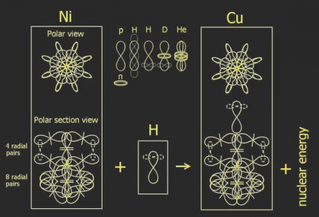 "In order to be consistent with reality," Hoyle continues, "we choose the boundary condition..." leading to an equation equating, seemed it so, to the path of least resistance (not the one pictured). But with so many options on the table, Hoyle muses in front of Nicolas Flamel, "why does Nature always select the retarded one?" I ask myself why he deems Nature worthy of a capital letter, while the Universe can clearly go without such deference. I asked at the time, "Well, does she? How do we know, merely because we are choosing the path of least resistance in following clues to a conclusion, that Nature does not access many other sums over the histories of what she encounters? Who is to say that we see the full picture, when clearly we are tempted to the bonds of local, easily interpreted solutions?" As I write now I'm reminded of the endless cycle of seeking forgiveness and spoiling each other's tents. A repetition of history which keeps on going in the same direction and getting the same results. Like circling vultures, round and round, waiting for the carcass to be left by the killer, patiently spinning on a current of air as high as ever we want to be, as everybody loves looking down, as Morcheeba sang. Going round the same cycles of war and famine and gluttony and tyranny because we're not making sense of the signs, even while the signs are there, because we don't want to see them. They're too deep, too dark, and too much in the equation for comfort. Time to renormalise. Back to TV suppers and the sofa. Page 16. I'm watching the clock now. I've not covered much ground with this book but I just can't skip the beats. "In the averaging process, many infinite terms cancel and we are left with a force term that is finite." May the force be with you, Darth, beloved Dark Prince out there on Twitterdom's Death Star. In other words, by cancelling out equilateral infinities, we are left with a reference to a singularity, which is subject to change through oscillation and movement, and which loses its kinetic energy as a result. As do living things, I added, as if an afterthought.  Page 18. I'm determined to skip more quickly but then.... "infinite self-interaction cannot be avoided in classical Maxwellian electrodynamics. With the introduction of quantisation, it was hoped to circumvent these difficulties." So it would appear that "quantum" was brought forth as a solution to a problem, as rabbits were introduced to improve pasture management. Like rabbits, problems quickly multiplied from this introduction and the need for cancellation of infinities arising. "Renormalisation" had to be created to contain the potential epidemic of paradoxes. In a twist to the tale, quantum theory highlights the infinite nature of interactivity and the mutually exclusive relationships between gravity, non-locality, and cause & effect. On page 21, Hoyle gives two systems of attraction, one of elastic string drawing two particles together and the other of gravity. Elasticity ceases to be an attracting force when the string has reached its natural length, while gravity continues to attract until the particles or objects collide. According to Hoyle's deterministic equations, elasticity is a "positive definite... characteristic of most systems in the world." Like the one which holds our feet to the floor while we walk about, and makes a mockery of space travel because we clearly haven't got our heads around circumventing it yet? To us as Earth colonists, in common with all other Earth colonists, gravity is the elasticity that binds us to the planet surface. But as Tim McGee said in NCIS tonight (25th November), "We should never allow our fears or the expectation of others to set boundaries on our destiny."  This is our planet viewed from space during a solar eclipse. The 'diamond ring' effect takes place for just a few seconds as the exact alignment of two bodies positioned in exactly the right size/distance proportion to achieve a total eclipse moves back out of phase. The eclipse event is rare, but the fact that it happens at all is due to a cosmological coincidence. Although the sun is about 400 times the diameter of the moon, the sun is also 400 times further away from us. The illusion this creates is one of perfection, perhaps purely for our benefit as we are here on Earth to appreciate it.  Our planetary home is absolutely enormous to us, and if we traverse just a little of it, we're doing well in life. Even if we are able to go right round it, or visit every country there is, we are still invisible specks of living matter existing on something billions of times bigger than we are, and the effects we cause as a destructive species, devastating though they may be as seen through our personal perspectives, are invisible from a distance in cosmological terms. The illusion we have that we are powerful enough to do serious damage to this planet may in itself be an illusion, a trick of light and time that makes us think we are able to affect the course of cosmic history. 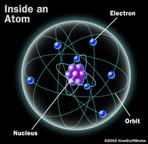 You'll see from this picture that an atom has electrons zipping round it in a cloud, in much the same way as we move around the Earth. Electrons, although very energetic compared to the static nucleus of protons and neutrons, are still inclined towards 'ground state', which is the lowest amount of energy necessary for them to exist. All electrons want to be in 'ground state', but photons keep interfering. Light particles interact with electrons to make them more active (when the electron absorbs one) or less active (when it releases one). One can wonder whether the electron has much choice in whether it absorbs or releases a photon, but we can never know this because at the quantum level, thought processes are totally unknown to us. We have no way of proving an electron thinks, but we have evidence to suggest that it does, in some form at least. Behind the picture is an article published last year which brings to light evidence that the electron is more complicated than we first thought. In fact it can split itself in two, if the conditions are energetic enough to make it (want to?) do so. While arguments may (and indeed should) rage about whether the electron is conscious, the coincidence that we seemingly behave very much like they do is suggestive of the truth in "as above, so below". As in the macro, so it is in the micro. The small and the large are reflective of each other. 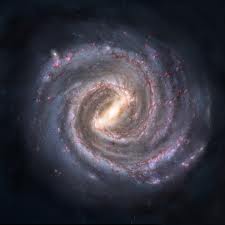 This is our planetary home again, seen from space. When we can realistically comprehend our size, we can start to grasp the quantum nature of our existence much more freely. Only by holding ourselves aloft with egos which make us feel like the most important things in the Universe can we remain drowning in the illusion that we are not of the quantum world. We are quantum, we are small. While many, many things are much bigger than us, we tend to take our role as observers to an extreme, verging on a belief that we could be the only life form in the entire Universe, which of course is totally absurd. But then, we do live in the Goldilocks Zone, and fairytales originate from the strangest psychological places. The article behind the picture gives an even better sense of perspective. Perhaps our place in history is determined by Fermi's Paradox, and the odds of our beating the odds of the paradox are the only odds worth knowing about, to the Universe, that is. I'd credit Abyss Uoregon if I knew where to, but I don't, so may the Force be with you wherever you are.
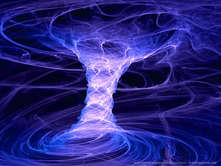 Robert Lanza, a notable microbiologist, sprang into my view today thanks to Alphan Manas, a notable futurist and inventor. Alphan posted an article on Twitter about Robert's impeccable theory on life and death from a scientific viewpoint. The article which caused such an internal stir is linked to this beautiful picture of a quantum vortex, a representation of double spin. The reason this article is so outstandingly impressive is that it makes perfect, logical sense of the life-death sequence and the evidence is so irrefutable that we have to take notice of the fast-becoming-fact that this life we live is part of an unfathomable infinity which makes the quantum nature of living indefatigable. We are brought up most commonly to believe that an afterlife is, at best, a hedged bet and at worst an impossibility. The longer I've been on this planet, the more certain I've become that "life as we know it" is a manufactured illusion, a neatly boxed version of the truth which takes no account of the bigger picture. 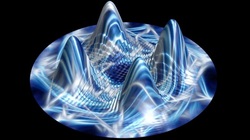 The image on the left is a representation of quantum tornadoes. This article is of more interest to semiconductor enthusiasts than psycosmic explorers, but it's also a door-opener to wider interpretations of what can be done with quantum foam. As sure as researchers can manipulate the electron-photon relationship (to come up with a new particle, of course, in the process), we can manipulate the nature of our own existence to maximise the benefits of living. The benefits of living have nothing to do with a quest for wealth or having twelve cars or a personal aeroplane, but everything to do with quality of life. We are, on a social scale, so obsessed with becoming rich that we feed a burgeoning industry selling bingo online and lottery tickets to millions and millions of people. Who benefits most from this fiscal addiction is not a difficult question but a really difficult question is how we got ourselves into this mess, and how we are going to get ourselves out of it. For while we are gorging on gambling, groceries and gadgetry, the earth is suffering the most appalling ravages and we are bleating that we can't do anything about that, because other people are to blame. Those other people are more powerful, more despotic, and more callous than we are. Apparently. At least, that's what we tend to believe.  Clearly we have a multiple choice of multiverses to choose from on our journey through infinity, but what we do with this life we lead right now really does matter to us personally in the course of our own evolution. If we fail to learn from our histories, more than likely we'll be forced to repeat them. This principle echoes through all great spiritual doctrines from Buddhism to the Akashic - therefore it surely makes sense to sit up and take note of what we are doing, so that if necessary we can change it. We have the power to change our own existence any time we like. My empowerment courses have changed so many lives, I'm convinced beyond doubt that every human has the power within them to make the most amazing things happen through personal will. Having taken a peek behind this final image, you might throw your hands up and cry, "What the hell? There's no stopping this, the whole world revolves around commerce and consumerism." Well, so it does. But you have a choice, right now, just as we all do at every point in time wherever we are on our world-line of infinity. We have a permanent choice to make the most of what we have, or to want what we haven't got. Time perhaps to ask ourselves where the road to riches has led us so far, and whether the permanently unattainable goal has been worth the permanent pursuit.
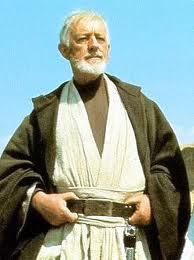 Tonight I obtained my Star Wars lifetime premiere. having watched not a single one of the Star Wars films to date, ever. I walked in on it after flying my hawk this afternoon and thought that, since I now have a relationship with Darth Vader, I'd better be taking notes. So I did. And this is what they were: "Before the Dark Times," said Obi-Wan, "before the Empire..." before corruption and stupidity overtook the order within chaos and turned everything into a melee soup of vicious retribution and hatred, "....one was seduced by the Dark Side of the Force. It binds the Galaxy together." And we find that, indeed, yes it does, in the form of Dark Matter which scientists are failing dismally to put a handle on, squirling as it is in the palm of their hands because they don't yet know where to look for it. "Learn about the Force, Luke," he implores in a cave, when nothing surrounds them but rock, the fabric of the Earth. Then Darth Vader comes stage left to make a point with a force choke: ""Don't be too proud of the technological marvel you've constructed," he snorts before condemning a feeble assailant to a near-death experience. "I find your lack of faith disturbing."  "The Force can have a strong influence on the weak mind," says Obi the Master, having demonstrated this, as my own Master did in 2000, with a situation in which the mastery of quantum entanglement could be shown its strength in real spacetime. For one nanosecond of life, Obi had a chance to prove to Luke what he knew to be true. So he took it. Then Hans Solo leaps to the set and bravado, guns, battles and a thirst for explosions threatens the stability of harmonious harmonics. Hans thinks the Force is just a load of mumbo-jumbo and nothing beats a big cannon. "I've been looking forward to this for a long time," says a squirly green alien. "I bet you have, " says Hans, promptly blowing him to bits. "Sorry about the mess," he grunts to the onlookers. Then the adverts have their say, and for proof of this you'll have to verify the evidence by accessing the screening of Star Wars on UK television tonight at 17 to 19.00 GMT or thereabouts - I can't even find a schedule for it now, because it's gone. "It's not going to get any better if you ignore it," from the New Advanced Events range. "Can you switch it up? Stereo speakers for sound worth hearing - here's the change. Got a little taste for adventure? He'd worked so hard to make this happen. When it comes together, the seasons change. So head over this Autumn, c'mon, c'mon, come ON!" (Bell) "We know just how the morning can feel."  Enter The Imperial One, sounding just a little dazed. "Her resistance to the mind probe is formidable," he reports impassively. "It may be some time." Meanwhile, Hans is negotiating with cuddly Jabba the Hutt, and assures him kindly, "You're a wonderful human being." Given the green light, Hans climbs aboard his craft and off he goes into the cosmos for an adventure he's craved for as long as ever he can remember. And the picture last used in my Net Blog comes onscreen, a surprise of thunderous note for me as I'd no idea it was from Star Wars. "Strap yourselves in, I'm going to make the jump to Light Speed..." Leia is trying to talk some sense into Peter Cushing, which as he is eternally bad, is proving a little difficult. "The more you tighten your grip, the more will slip through your fingers." In true style of a scientist who has convinced himself beyond doubt of boxes existing around him, Grand Moff says wearily, "I grow tired of asking this, so this is the last time..."  Back in the fastest lightspeed craft of all time, Hans Solo is standing his ground again. "Oki religions are no match for a missile," he insists. But O has better ideas. "Act on instinct," he tells Luke positively. "Your eyes can deceive you, don't trust them. Stretch out with your feelings..." A momentary distraction questions him about the luck factor. "In my experience," he replies, "there's no such thing as luck." "You've just taken your first step," O continues, so whatever you were thinking just then is on track; "You can't win, but there are alternatives to fighting."  Darth stands, like a dog that has detected game it can't quite point to. "I sense something..." he murmurs. "A presence I've not felt since...." The tannoy kicks in. "There's no-one here!" As Obi-Wan and Luke split destinies, O reminds him, "The Force will be with you always." More adverts, which tell us that if there's no home for nature, there'll be no nature. "If you build it, they'll come." I've never in my life seen an advert for the Royal Society for the Protection of Birds on the TV before. Never. Time for adventure, time to make new friends, time for battle. Are they listening to us, these intellects which are vastly greater than our own, listening for seeds of sentience while our technology is clumsily fumbling around looking for them? Are they talking to those who have chosen to listen? Don't you think they might be able to access our technology, like taking candy from a baby? One,two, three.... 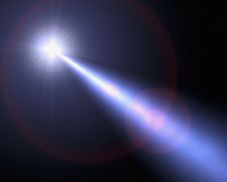 "I can't see a thing through this helmet," whines Luke in a lift. Back in the echelons of Dark Lordliness, Grand Moff reminds Darth Vader of the perilous precipice of his heritage. "You, my friend, are all that's left of your religion." That's where my Star Wars virginity break ended, and I sat up gasping, as my kid came strolling through the front door, making the dogs bark and making me get up and go do something else with my life to take me away from the lure of disbelief suspension on TV. Not before having had some fun with a notebook, though, and a couple of glasses of wine. May the Force be with you, Imperial One. And also with you, of course. 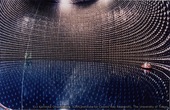 We don't know what a neutrino looks like, we just know a little bit about what it does. A neutrino leaves the Sun along with countless zillions of other neutrinos and a lot of photons. Unlike the photons, which interact with matter and get reflected or absorbed by it, the neutrino passes straight through - most of the time. Occasionally one of the countless zillions collides with an electron and explodes (annihilates). This is what neutrino experiments like this one at Super-K are set up to detect. Neutrinos are thought to be the oldest particles in the Universe and nobody knows what their world-line (lifetime) is. They move in straight lines according to our interpretations but while they are moving they are also spinning, and while they're spinning they're also oscillating - that is, they're changing from one form to another as they fly. These different forms - electron (not to be confused with electrons), muon and tau are the ones currently identified - all have different masses, and thus different properties, so it's quite incredible (and very much not understood) that they can morph so dramatically in this way. 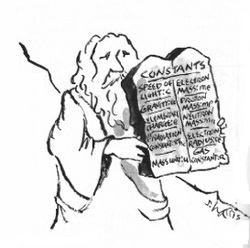 Neutrinos travel at the speed of light; at least, that's what physicists say, despite the fact that some experiments have suggested they could even exceed light-speed, because light-speed is supposed to be a constant. A constant is something that must always be so, in science. There's no room for manipulating a constant or bending it a little where the need arises. Nature has a funny way of breaking what does not bend, a law which brought about the inevitable death of supersymmetry. Neutrinos may find themselves sweeping through constants in much the same way as they sweep through matter, unhindered and undeterred. And while we chase them with our very expensive pieces of kit, we might be missing a point. Neutrinos might be the particles connecting our conscience with that of the Sun. Whatever you personally believe, there was a time when every civilisation on Earth revered the Sun. All the great ancient monuments had the Sun squarely in focus. All the religions which give themselves festivals have chosen dates of importance on the solar calendar. And if we now believe that we have grown out of sun-worshipping and grown up in the process, it's a sobering thought that what we seem to be worshipping instead are the minted coins which came originally from loving the Sun's image and replicating it in gold. I think I'll just leave it there for now and see what others have to say.
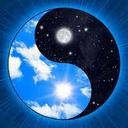 On my Weebly Stats today, I found a person had searched Google with this question, leading them to this site. I thought, "That's a very interesting question," and decided to Blog on it. Yin and Yang, the balance of nature in traditional terms, comes from the East when the culture over there - where the sun rises - was devoted to the art and passion of the natural world rather than consumption of it. As polarities, which is what Yin and Yang symbolise, they must have deep roots in the universal order and therefore must relate to us, and everything else, in an esoteric way. Particles are stuffed with polarities, juxtapositions and irrationalities. They have positive or negative charge, if they are charged at all, along with spin, having any number of permutations, and world line - the amount of time they spend in existence. Some particles are very long-lived, like the electron, while others like the Higgs boson are fleeting in appearance before vanishing back into the ether. 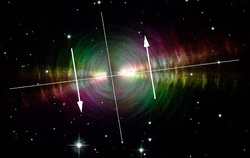 This makes the question asked by that person unknown a very good question indeed. Maybe answering that question using the terms of reference Yin and Yang propose would be a useful exercise in determining the deeper level of realism which Dark Matter forces us to consider. I'd like your thoughts, since I have none, other than the question - what constitutes the character of a particle as viewed in the ways we have forgotten to analyse our reality? |
AuthorKathy is the author of Quantumology. She met up with quantum mechanics in 1997, pledging allegiance to its sources thereafter. These are her personal thoughts and testimonies. Archives
April 2023
|
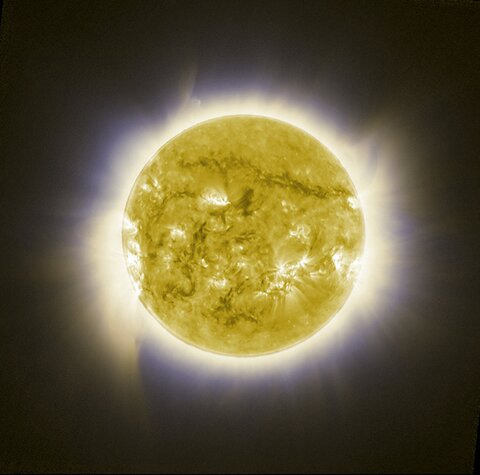
 RSS Feed
RSS Feed